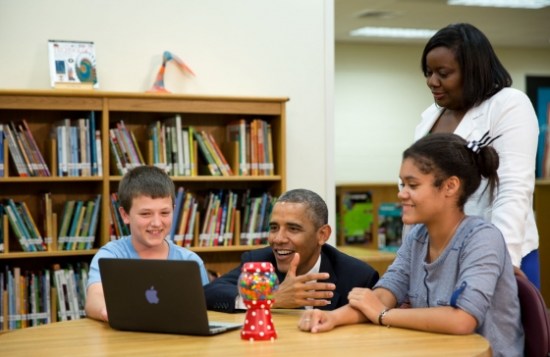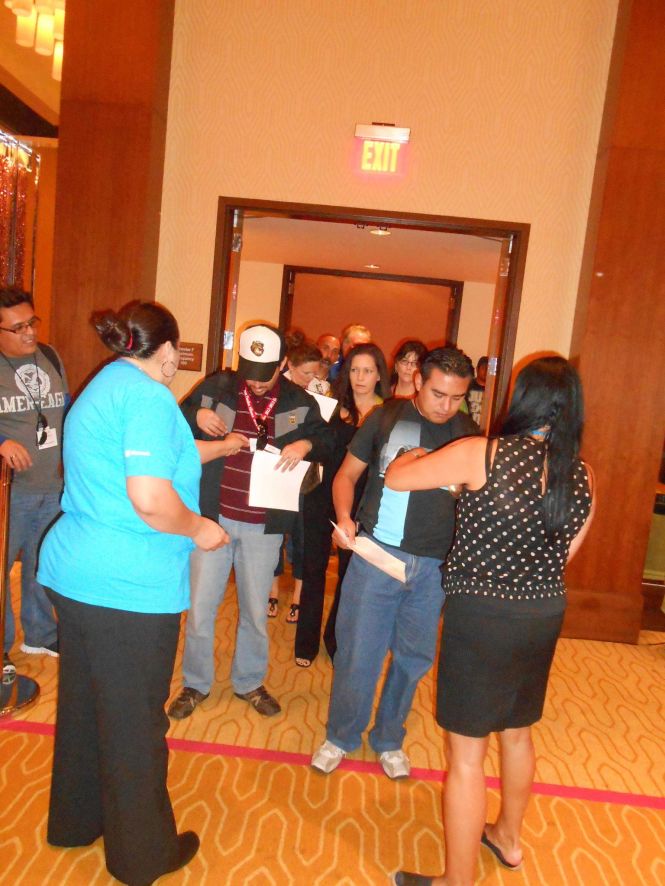
Wireless shows the way to the future ways of learning
if we can conquer the digital divide.
Bonnie Bracey-Sutton
I was the only K-12 teacher on the National Information Infrastructure Advisory Council. I have been waiting years for transformational change to happen.We still have need, lack of access, and a broadband problem.
Let’s start with this set of charts. Source (http://mashable.com/2013/06/14/digital-divide-problem/)
I have been researching and working with these issue for a long time.
Take a look at this info-graphic. (http://mashable.com/2012/02/05/digital-divide-infographic/)

Early exposure and interest are key!
Recently people talked to me and said, you know, people are tired of hearing about the digital divide, and broadband access, it is boring.Why don’t you do something that is more interesting!( It was depressing to hear) But recently the White House, and other reports confirm the concerns that I had about the two Americas we have in technology. Most people with the technology went their merry way , not remembering that many had neither the tools, technology or knowledge to make the change we want for 21st century learning. see this report from NTIA.
RESEARCH PROOF
Here’s a bit of disappointing but not-so-surprising news: according to a new report from the nonprofit think tank Center for American Progress (CAP), U.S. schools aren’t doing enough to enable technology in the classroom to live up to its potential.
Oh really? Oh really…
Not only are students across the country frequently using technology for basic skills (for example, middle school students are mostly using computers for drills and practice exercises, not data analysis or other activities that really take advantage of computing power and sophisticated software), schools aren’t looking at the returns on their technology-related investments. The CAP also found that students from high-poverty areas were less likely to get access to rigorous science and technology learning opportunities.
“In this analysis, it quickly became clear to us that many schools and districts have not taken full advantage of the ways that technology can be used to dramatically improve education-delivery systems,” the report said.
The White House
The White House’s new broadband report is embedded below. What can be done to bridge the digital divide? Share your thoughts in the comments.
White House Broadband Report
( This is a document that can be downloaded )
This isn’t about faster Internet or fewer dropped calls. It’s about connecting every part of America tothe digital age. It’s about a rural community in Iowa or Alabama where farmers and small business owners will be able to sell their products all over the world. It’s about a firefighter who can download the design of a burning building onto a handheld device; a student who can take classes with a digital textbook; or a patient who can have face-to-face video chats with her doctor.”
– President Obama
” Committing to high-speed connectivity for all our students in five years will unleash the potential of the education technology market, where a lack of infrastructure has held back innovation.”
In June , the White House announced an initiative to expand high-speed broadband Internet access to virtually every school in the country. The program is expected to cost several billion dollars; according to a senior administration official. The White House argues that the expanded Internet access will provide teachers with more tools; make learning more engaging and better prepare students for 21st century jobs. The plan does not require congressional approval. Instead; an existing program that subsidizes Internet access in schools and libraries. E-Rate is funded through fees on monthly telephone bills. The White House officials said officials expect the president’s plan would add no more than 40 cents to every phone bill per month for the next few years. The proposal would be a one-time investment with the goal of providing schools with Internet connections of one gigabit per second—about 100 times faster than the average home broadband connection. The White House expects 99 percent of students to have access to at least a 100-megabit-per-second connection within five years. The administration notes that many schools currently rely on a single slow connection for hundreds of students and teachers. The officials argue that next-generation Internet speeds will allow students to download up-to-date learning materials.
The announcement was a relief to me , it signified that official Washington understood that the new initiatives based on technology, digital textbooks and common core , and other STEM initiatives are not possible without new infrastructure.
Richard Bennett in a recent article states that
“The major causes for low subscribership, as extensive survey research shows, are low interest in the Internet and minimal digital literacy. And too many American households lack the money or interest to buy a computer. As a result, more Americans subscribe to cable TV and cellphones than to Internet service. Our broadband subscription rate is 70 percent, but could easily surpass 90 percent if computer ownership and digital literacy were widespread.”
Indeed, the most critical issue facing American broadband has nothing to do with the quality of our networks; it is our relatively low rates of subscribership.
What ever the reason. There is digital inequality in the US. Mr. Bennet may not work or travel in rural and distant areas. I assume that he has no real experience with the schools in these areas.
White House Initiative
http://www.whitehouse.gov/blog/2013/06/06/bringing-america-s-students-digital-age “In this analysis, it quickly became clear to us that many schools and districts have not taken full advantage of the ways that technology can be used to dramatically improve education-delivery systems,” the report said.
“In this analysis, it quickly became clear to us that many schools and districts have not taken full advantage of the ways that technology can be used to dramatically improve education-delivery systems,” the report said.
What ever the reason. There is digital inequality in the US. Mr. Bennet may not work or travel in rural and distant areas. I assume that he has no real experience with the schools in these areas. There are some efforts kind of complicated to get people comfortable with being on line.
Google also sees the problem and this is one of their solutions.
Most of you might have heard of Google's new global Internet access
experiment - Project Loon.
See http://www.pcmag.com/article2/0,2817,2420540,00.asp
Check out the beautifully done motion graphics video at
http://www.youtube.com/watch?v=m96tYpEk1Ao
Read More about the Digital Divide and STEM here.
http://www.scoop.it/t/broadband-and-connectivity-in-america
http://www.scoop.it/t/broadband-and-connectivity-in-america
 I am at the ISTE conference in San Antonio.
I am at the ISTE conference in San Antonio.



